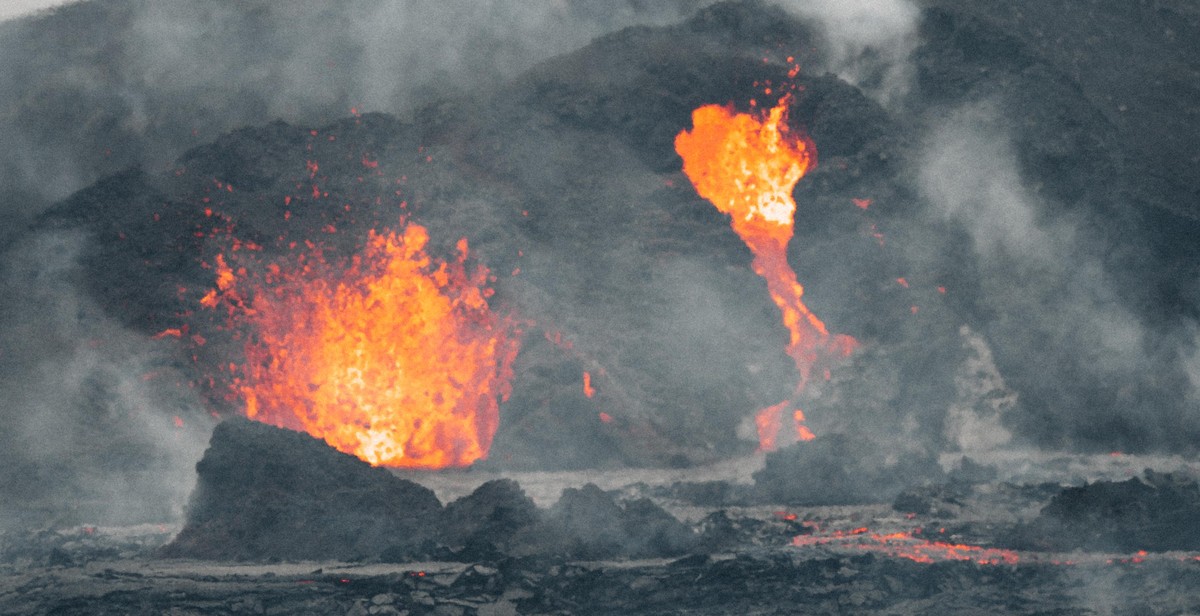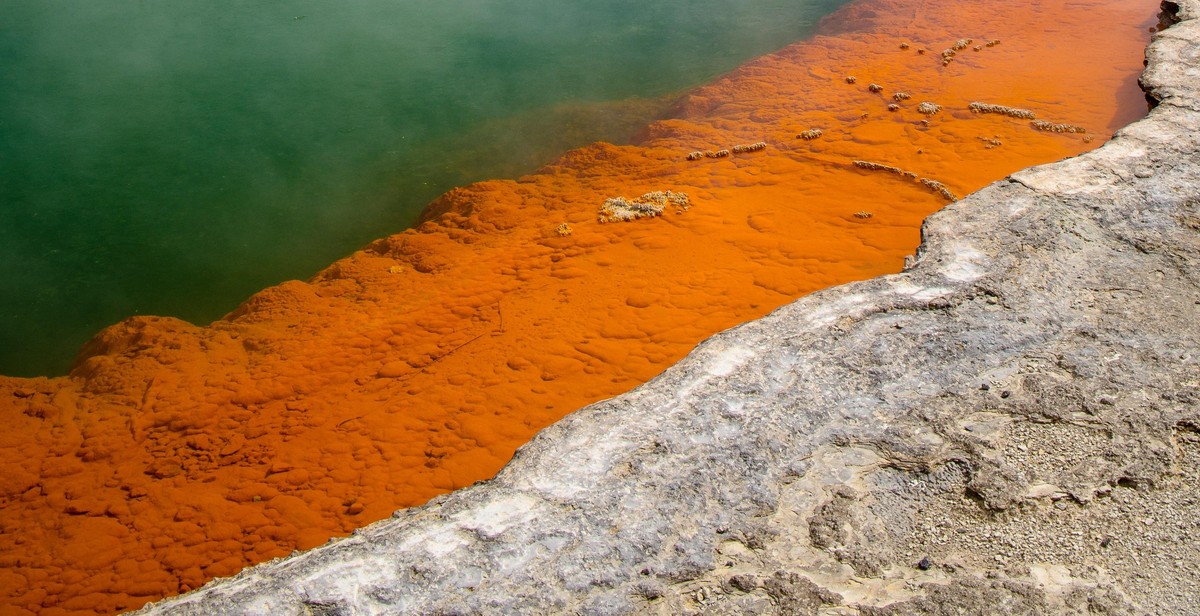How to Interpret Volcano Monitoring Data: Analyzing Seismic, Gas, and Thermal Readings
Volcanoes are fascinating natural wonders that can be both awe-inspiring and deadly. They are constantly monitored by scientists to predict and mitigate hazardous volcanic events. Volcano monitoring involves analyzing various types of data, including seismic, gas, and thermal readings.
Why is volcano monitoring important?
Volcano monitoring is crucial for public safety and hazard mitigation. It helps to predict volcanic eruptions, assess volcanic hazards, and provide early warning to communities at risk. By analyzing volcano monitoring data, scientists can better understand the behavior of volcanoes and make informed decisions regarding evacuation and emergency response.
What types of data are collected during volcano monitoring?
Seismic, gas, and thermal readings are the primary types of data collected during volcano monitoring. Seismic data measures ground vibrations caused by magma movement and volcanic activity. Gas data measures the chemical composition of volcanic gases, which can indicate changes in volcanic activity. Thermal data measures the temperature of the volcano and can detect changes in volcanic activity that may not be visible to the naked eye.
How is volcano monitoring data analyzed?
Volcano monitoring data is analyzed using a variety of techniques and tools, including spectroscopy, gas chromatography, and satellite imagery. Scientists also use computer models to simulate volcanic activity and predict future behavior. By combining and interpreting different types of data, scientists can develop a better understanding of volcanic activity and provide more accurate hazard assessments.

Why Interpret Volcano Monitoring Data?
Volcano monitoring is a critical aspect of predicting and mitigating the potential dangers of volcanic eruptions. Volcanic eruptions can cause significant damage to property and infrastructure, as well as pose a threat to human life. Therefore, it is essential to interpret volcano monitoring data to understand the behavior of a volcano accurately.
Interpreting volcano monitoring data helps volcanologists and other experts to identify patterns and trends that can indicate an impending eruption. For instance, seismic readings can reveal the movement of magma beneath the volcano, which could lead to an eruption. Gas and thermal readings, on the other hand, can provide valuable information about the chemical composition of the magma and the temperature of the volcano.
By interpreting volcano monitoring data, experts can also determine the potential hazards of an eruption, such as ash fall, pyroclastic flows, and lahars. This information can help authorities to make informed decisions about evacuation orders and other measures to protect the public.
Overall, interpreting volcano monitoring data is crucial for predicting and mitigating the potential dangers of volcanic eruptions. It helps authorities to take proactive measures to protect communities and minimize the impact of an eruption.

Types of Volcano Monitoring Data
Volcano monitoring data can provide valuable insights into the behavior of volcanoes, allowing scientists to make predictions about future eruptions and assess potential hazards. There are three main types of volcano monitoring data: seismic readings, gas readings, and thermal readings.
Seismic Readings
Seismic readings measure the vibrations and movements of the earth’s crust caused by volcanic activity. These readings can provide information about the location, depth, and intensity of volcanic activity, as well as the type of eruption that is occurring. Seismic data is collected using seismometers, which measure the frequency and amplitude of seismic waves.
Gas Readings
Gas readings measure the composition and quantity of gases emitted by a volcano. These readings can provide information about the type of magma that is present, as well as the potential for explosive eruptions. Gas data is collected using gas sensors, which can detect the presence of sulfur dioxide, carbon dioxide, and other gases.
Thermal Readings
Thermal readings measure the temperature of the ground and the surrounding environment near a volcano. These readings can provide information about the activity level of a volcano, as well as the potential for an eruption. Thermal data is collected using thermal cameras, which can detect changes in temperature and heat flow.
| Type of Data | What it Measures | How it is Collected |
|---|---|---|
| Seismic | Earthquakes and vibrations caused by volcanic activity | Seismometers |
| Gas | Composition and quantity of gases emitted by a volcano | Gas sensors |
| Thermal | Temperature of the ground and surrounding environment | Thermal cameras |

Interpreting Seismic Readings
Seismic readings are an essential tool in monitoring volcanoes. They provide valuable information about the movement and behavior of magma and can help predict eruptions. There are different types of seismic waves, and each one can reveal different information about the volcano.
Types of Seismic Waves
There are two main types of seismic waves generated by volcanoes: body waves and surface waves. Body waves are divided into two categories: Primary (P) waves and Secondary (S) waves. P-waves are the fastest and can travel through solid and liquid materials, while S-waves are slower and can only travel through solid materials. Surface waves are slower than body waves and travel only on the surface of the earth.
Interpreting Seismic Waveforms
Seismic waveforms are graphical representations of the seismic waves recorded by monitoring equipment. Interpreting these waveforms requires understanding the characteristics of different types of waves. For example, P-waves have a distinctive up-and-down motion, while S-waves have a side-to-side motion. Surface waves have a rolling motion.
Analyzing Seismic Tremor
Seismic tremor is a continuous signal generated by the movement of magma and other fluids within the volcano. Analyzing seismic tremor can provide information about the volume and pressure of magma, as well as the location of the magma chamber. A sustained increase in tremor amplitude can indicate an impending eruption.
Interpreting seismic readings is a complex process that requires expertise and experience. However, understanding the basics of seismic waves, waveforms, and tremor can provide valuable insights into the behavior of a volcano and help predict eruptions.

Interpreting Gas Readings
Volcanoes emit various types of gases, including water vapor, carbon dioxide, sulfur dioxide, hydrogen sulfide, and carbon monoxide. These gases can provide important information about the volcanic activity and help in predicting potential eruptions.
Types of Gases Emitted by Volcanoes
The types of gases emitted by a volcano can vary depending on the type of eruption and the composition of the magma. For instance, volcanoes that erupt explosively tend to emit more sulfur dioxide than those that erupt effusively.
Water vapor is the most abundant gas emitted by volcanoes, followed by carbon dioxide. Sulfur dioxide is also commonly emitted and is often used as an indicator of volcanic activity. Hydrogen sulfide and carbon monoxide are emitted in smaller quantities.
Analyzing Changes in Gas Composition and Concentration
Changes in the composition and concentration of gases emitted by a volcano can indicate changes in volcanic activity. For example, an increase in sulfur dioxide emissions could indicate an impending eruption.
Gas readings can be analyzed using various techniques, including remote sensing and direct sampling. Remote sensing involves using instruments such as spectrometers to measure the concentration of gases in the atmosphere above the volcano. Direct sampling involves collecting gas samples from the volcanic vent or fumaroles for laboratory analysis.
Comparing gas readings over time can also provide valuable information. For instance, a sudden increase in carbon dioxide emissions could indicate the rise of magma from deeper levels within the volcano.
| Type of Gas | Indicator of Volcanic Activity |
|---|---|
| Sulfur dioxide | Often used as an indicator of volcanic activity |
| Carbon dioxide | An increase in emissions could indicate the rise of magma from deeper levels within the volcano |

Interpreting Thermal Readings
Thermal monitoring is an essential part of volcano monitoring as it provides vital information on the temperature and heat flux of the volcanic system. Thermal anomalies can indicate changes in the activity level of a volcano, and therefore, it is crucial to analyze thermal data accurately. There are two types of thermal anomalies that scientists monitor:
- Hot spots: areas where the temperature is significantly higher than the surrounding areas.
- Cold spots: areas where the temperature is significantly lower than the surrounding areas.
Changes in temperature and heat flux can also be analyzed to determine changes in volcano activity. For example, an increase in temperature and heat flux may indicate an increase in magma activity, while a decrease may indicate a decrease in activity.
Scientists use a variety of techniques to measure thermal data, including satellite imagery, infrared cameras, and ground-based sensors. The data collected is then analyzed to determine if there are any changes in the thermal activity of the volcano.
| Factor | Interpretation |
|---|---|
| Location of thermal anomaly | Indicates the source of the thermal activity. |
| Size and shape of thermal anomaly | Indicates the extent and type of thermal activity. |
| Temperature and heat flux | Indicates changes in volcano activity. |
Conclusion
Interpreting thermal readings is a vital aspect of volcano monitoring. By analyzing changes in temperature and heat flux, scientists can determine changes in the activity level of a volcano. It is important to consider various factors when interpreting thermal data, such as the location, size, shape, temperature, and heat flux of the thermal anomaly.

Combining Data Sets for a Complete Picture
Interpreting volcano monitoring data can be a complex and challenging task. Often, no single data set can provide a complete picture of what is happening beneath the surface. Therefore, it is essential to combine different types of data to get a comprehensive understanding of volcano behavior.
Seismic, gas, and thermal readings are some of the most crucial data sets used in volcano monitoring. Each of these data sets provides unique information that, when combined, can give a more complete picture of what is happening beneath the surface.
Seismic Readings
Seismic readings are essential in detecting volcanic activity. They measure ground vibrations caused by magma movement, rock fracturing, and gas explosions. Seismic data can help scientists determine the location, depth, and size of an eruption.
Gas Readings
Gas readings are another crucial data set in volcano monitoring. They measure the amount of gases released from a volcano, such as sulfur dioxide, carbon dioxide, and hydrogen sulfide. Gas readings can help scientists determine the type of eruption, the volume of magma, and the potential hazards to human health.
Thermal Readings
Thermal readings measure the heat emitted from a volcano’s surface. They can help scientists determine the temperature and location of magma beneath the surface. Thermal data can also provide information on the distribution of volcanic activity and potential hazards to the environment.
Combining these data sets can help scientists get a more complete picture of what is happening beneath a volcano’s surface. By analyzing seismic, gas, and thermal readings together, they can better understand the potential hazards and make more accurate predictions about future eruptions.

Conclusion
Interpreting volcano monitoring data is a complex and highly specialized task that requires both knowledge and experience. Analyzing seismic, gas, and thermal readings can provide valuable insights into the behavior of a volcano, allowing scientists to make accurate predictions about future eruptions and mitigate the risks to nearby communities.
When interpreting seismic data, it is important to consider the magnitude, frequency, and location of earthquakes. Gas readings can provide information about the composition of volcanic gases, which can indicate changes in the magma chamber. Thermal readings can help identify areas of increased heat flow and potential eruption sites.
It is important to note that volcano monitoring is not an exact science and that there is always a degree of uncertainty involved. However, by combining multiple types of data and using advanced analysis techniques, scientists can gain a better understanding of volcanic activity and make more accurate predictions about future eruptions.
Tips for Interpreting Volcano Monitoring Data
- Always consider multiple types of data when analyzing volcanic activity
- Pay attention to changes in seismic activity, gas emissions, and thermal readings
- Consult with other experts and review historical data
- Remember that volcano monitoring is not an exact science and that there is always a degree of uncertainty involved
Stay Safe
For those living near active volcanoes, it is important to stay informed about the latest monitoring data and follow the advice of local authorities. Always have an emergency plan in place and be prepared to evacuate if necessary.
| Volcano Monitoring Data | Interpretation |
|---|---|
| Seismic activity | Indicates movement of magma and potential for eruption |
| Gas emissions | Provides information about composition of volcanic gases and changes in magma chamber |
| Thermal readings | Identifies areas of increased heat flow and potential eruption sites |
